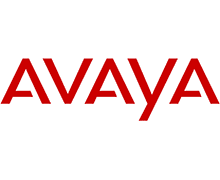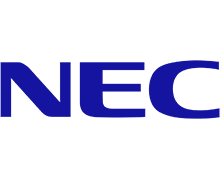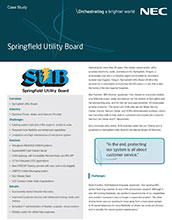UCaaS Managed for You
UCaaS offers organizations an all-in-one, cloud-based communications platform that includes meetings, video, chat, phone, file sharing, and other collaboration features.
But why managed? IT teams are lean and budgets are tight. That’s why we offer a full suite of managed services and workplace solutions delivered in a budget-friendly OPEX model. We create uniform experiences across multiple locations with consistency, speed, and agility through a robust design, deployment, and manage methodology — giving you one partner to guide you from where you are to where you want to be.
Create a digital workplace that employees will embrace and that also ensures successful business continuity.

Top Considerations for Business Continuity
See what you need to consider to maintain business continuity through Managed UCaaS.

The Digital Workplace
Today’s workforce is changing. There is an evolution (and revolution) happening in the workplace that is affecting how and where we communicate.

What’s the Difference?
Learn about the three UC&C options: on-premises, cloud-hosted, and hybrid and which one is best for your organization.
Managed Migration and Services
With more than 40 years experience in deploying in-building IT and communications technologies, a footprint that spans 120 countries, time-tested methodologies, certified technicians, and a proven track record, we have all the managed services needed
to make your move to UCaaS smooth and successful.

Professional
Services
- Consulting/Discovery
- Engineering/Architecture
- Assessments/Surveys
- Project Management

Field
Services
- On-Site Services
- Multisite Deployments
- Staging Services
- Logistics
- On-Site Staffing

Support
Services
- Remote Configuration
- Remote Support
- Service Desk
- Monitoring
- Sunset Services
- E-Waste

Service Level
Management
- Reporting
- Advanced Escalation
- Service Level Agreements
- Customer Success Manager
Black Box UCaaS Partners
Redefine your business UCaaS. Choose from seamless solutions that provide all-in-one voice, video, messaging, meetings, file sharing, and more. We’ll team up with you to find the right solution for your organization from one of our industry-leading
partners.
Click on a partner logo to discover additional resources and information.
Unified Communications & Collaboration
Successful enterprises know their competitive advantage lies in their workforce and today’s workforce is the most diverse ever with four generations working side by side, each with a preferred way of communicating from phone calls to video conferencing.
Related Topics
Read more about the technologies in UCaaS

Gartner Top 10 Tech Trends for 2020
Gartner defines a strategic trend as one with substantial disruptive potential that is beginning to break out of an emerging state into broader use and impact.
“People-centric smart spaces are the structure used to organize and evaluate the primary impact of the Gartner top strategic technology trends for 2020,” said David Cearley, vice president and Gartner Fellow. “Putting people at the center of your technology strategy highlights one of the most important aspects of technology — how it impacts customers, employees, business partners, society or other key constituencies. Arguably all actions of the organization can be attributed to how it impacts these individuals and groups either directly or indirectly. This is a people-centric approach.”
“Smart spaces build on the people-centric notion. A smart space is a physical environment in which people and technology-enabled systems interact in increasingly open, connected, coordinated and intelligent ecosystems. Multiple elements — including people, processes, services and things — come together in a smart space to create a more immersive, interactive and automated experience,” said Mr. Cearley.
1. Hyperautomation
This is the process of automation and automating tasks and processes across organizations. It’s the combination of multiple machine learning (ML), packaged software, and automation tools to deliver work. It refers not only to the breadth of the pallet of tools, but also to all the steps of automation itself. Understanding automation mechanisms, how they relate to each other, and how they can be combined and coordinated is a major focus for hyperautomation.This trend was kicked off with robotic process automation (RPA). But RPA alone is not hyperautomation. Hyperautomation requires a combination of tools to help support replicating pieces of where the human is involved in a task.
2. Multiexperience
Gartner predicts that through 2028, the user experience will undergo a significant shift in how we perceive the digital world from a two-dimensional computer-centric model to an multi-sensory, multimodal experience. Conversational platforms are changing the way in which people interact with the digital world. Virtual reality (VR), augmented reality (AR) and mixed reality (MR) are changing the way in which people perceive the digital world.“The model will shift from one of technology-literate people to one of people-literate technology. The burden of translating intent will move from the user to the computer,” said Brian Burke, research vice president at Gartner. “This ability to communicate with users across many human senses will provide a richer environment for delivering nuanced information.”
3. Democratization of Expertise
Democratization is focused on providing people with access to technical expertise, such as machine learning and application development or business expertise such as sales processes and economic analysis via a radically simplified experience that doesn’t require extensive and costly training. Through 2023, Gartner expects four key aspects of the democratization trend to accelerate including democratization of data and analytics, democratization of development such as with AI tools, democratization of design tools to empower the citizen-developer, and democratization of knowledge giving non-IT professionals access to tools and systems that empower them beyond their own expertise.4. Human Augmentation
This explores how we can leverage technology to augment the human experience both physically and cognitively. Physical augmentation changes our inherent physical capabilities by implanting or hosting a technology element on our bodies, such as a wearable device. Cognitive augmentation can occur through accessing information and exploiting applications on traditional computer systems and the emerging multiexperience interface in smart spaces.Gartner predicts that over the next 10 years, increasing levels of human augmentation will become prevalent as individuals seek personal enhancements. This will create a new “consumerization” effect where employees seek to exploit their personal enhancements — and even extend them — to improve their office environment.
5. Transparency and Traceability
Consumers are increasingly aware that their personal information is valuable and are demanding control. Organizations recognize the increasing risk of securing and managing personal data, and governments are implementing strict legislation to ensure they do. Transparency and traceability are critical elements to support these digital ethics and privacy needs.Transparency and traceability refer to a range of attitudes, actions and supporting technologies and practices designed to address regulatory requirements, preserve an ethical approach to use of artificial intelligence (AI) and other advanced technologies, and repair the growing lack of trust in companies. As organizations build out transparency and trust practices, they must focus on three areas: (1) AI and ML; (2) personal data privacy, ownership and control; and (3) ethically aligned design.
6. The Empowered Edge
Edge computing is a topology that shifts computing power to edge devices. It keeps data traffic and collection local to reduce latency and enables greater autonomy of edge devices.“Much of the current focus on edge computing comes from the need for IoT systems to deliver disconnected or distributed capabilities into the embedded IoT world for specific industries such as manufacturing or retail,” said Mr. Burke. “However, edge computing will become a dominant factor across virtually all industries and use cases as the edge is empowered with increasingly more sophisticated and specialized compute resources and more data storage. Complex edge devices, including robots, drones, autonomous vehicles and operational systems will accelerate this shift.”
7. Distributed Cloud
Distributed cloud represents a significant shift from the centralized model of most public cloud services to the distribution of cloud services to different locations. The cloud provider assumes responsibility for the operation, governance, updates to and evolution of the services.
8. Autonomous Things
Autonomous things are physical devices that use AI to automate functions previously performed by humans. The most common autonomous things are robots, drones, autonomous vehicles/ships and appliances. Their automation goes beyond the automation provided by rigid programing models, and they exploit AI to deliver advanced behaviors that interact more naturally with their surroundings and with people. As the technology capability improves, regulation permits and social acceptance grows, autonomous things will increasingly be deployed in uncontrolled public spaces.“As autonomous things proliferate, we expect a shift from stand-alone intelligent things to a swarm of collaborative intelligent things where multiple devices will work together, either independently of people or with human input,” said Mr. Burke. “For example, heterogeneous robots can operate in a coordinated assembly process. In the delivery market, the most effective solution may be to use an autonomous vehicle to move packages to the target area. Robots and drones aboard the vehicle could then affect final delivery of the package.”
9. Practical Blockchain
Blockchain has the potential to reshape industries by enabling trust, providing transparency and enabling value exchange across business ecosystems, potentially lowering costs, reducing transaction settlement times and improving cash flow. Assets can be traced to their origin, significantly reducing the opportunities for substitutions with counterfeit goods. Asset tracking also has value in other areas, such as tracing food across a supply chain to more easily identify the origin of contamination or track individual parts to assist in product recalls. Another area in which blockchain has potential is identity management. Smart contracts can be programmed into the blockchain where events can trigger actions; for example, payment is released when goods are received.“Blockchain remains immature for enterprise deployments due to a range of technical issues including poor scalability and interoperability. Despite these challenges, the significant potential for disruption and revenue generation means organizations should begin evaluating blockchain, even if they don’t anticipate aggressive adoption of the technologies in the near term,” said Mr. Burke.
10. AI Security
Artificial intelligence and machine learning will continue to augment human decision making across a broad set of use cases. This creates great opportunities to enable hyperautomation and leverage autonomous things to deliver business transformation. It also creates significant new challenges for security teams with a massive increase in potential points of attack with IoT, cloud computing, microservices and highly connected systems in smart spaces. Security and risk leaders should focus on three key areas — protecting AI-powered systems, leveraging AI to enhance security defense, and anticipating nefarious use of AI by attackers.Cearley said, "Really what's happening with security is that the bad guys are using it, and the good guys are using it, too. We think that by 2022, 30% of all cyberattacks will leverage things like training data poisoning, AI model theft or adversarial samples."
If you’re thinking about your digital transformation, talk to Black Box. Our edge services include On-Demand, Day 2 support, Project Services, and Managed Edge Services for national and international organizations.
If you would like to receive our quarterly newsletter, View from the Edge, you can sign up here
Where Do We Start?
Work quickly to identify needs and outline a plan of action. Contact a Black Box expert today.






